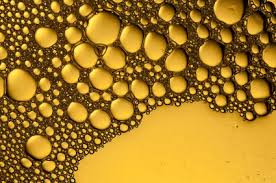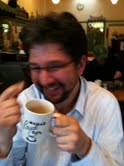 |
The MCT-suppliment diet is just one of many
effective high-fat, low-carb epilepsy treatments |
|
|
|
|
|
A new study in the journal
Brain reveals one mechanism by which a variant of the ketogenic diet treatment seems to work. The MCT (medium-chain triglyceride)
ketogenic diet is a relatively easy to follow version of the diet that is more popular
in the UK than in the US, where other lower-carb varieties predominate. It was thought that ingested MCT oil produced ketones more
easily than other kinds of fats, and that the extra ketones produced were hefting
the weight of seizure control. The new study, though, reveals the
effectiveness of a particular fatty acid, decanoic acid, at quelling
seizures in animal models. Like ketones, decanoic acid is produced by
the liver when the body runs out of carbohydrates to burn and converts fat
into fuel for the brain. In the animal studies at University
College London, and reported in
Brain, decanoic acid was shown to directly decrease the excitability of
neurons and thus reduce the risk of seizures. The presence of ketones themselves didn't seem to matter much.
High-fat, low-carb, ketogenic diets have been effectively used to treat epilepsy since the 1920s. In the late 20s and 30s it was the most popular and most effective treatment available, and was especially good for treating children, whose eating habits could be more easily controlled than those of adults. The popularity of ketogenic diets as a first-line treatment took a nose dive, though, with the discovery of the anti-seizure drug Dilantin in the late 1940s. The diet's effectiveness (better than Dilantin for hard-to-treat cases) was clear to clinicians who used it, but because it was labor intensive for patients, care givers, and doctors, and also because no one knew how it worked, it fell from fashion. Fortunately, the treatment was kept alive in a few epilepsy centers, most notably at Johns Hopkins in Baltimore, where hundreds of so-called "intractable" pediatric epilepsy patients found relief over the decades.
Ketogenic treatments became popular again in the 1990s, largely because of the publicity following an
NBC Dateline documentary about the effectiveness (and lack of negative side effects) associated with the under-used treatment. Still, though, the mechanisms by which the treatment supressed seizures remained mysterious. Only in the past decade has research on how the diet works really begun to bear fruit. Different theories have spawned variations of the diet, some focusing on raising ketone levels in patients, others focusing on the beneficial effects of the fats themselves, and still others on the positive effects of minimizing carbohydrates. According to the top researchers in the field, there may well be more than one mechanism at play. That would help explain the surprisingly broad effects of the diet, which is also currently being studied as a treatment for Parkinson's, Alzheimer's, and even cancer.
This
New Scientist Piece by Clare Wilson is good, but it confuses the MCT ketogenic diet for all ketogenic treatments and assumes that the mechanism reported in the
Brain paper explains all of the ketogenic diet effects. Fortunately, it's much more likely that other mechanisms will also be revealed in months and years to come. And each of those will open new clinical possibilities and shed light on basic metabolic processes in the brain.






